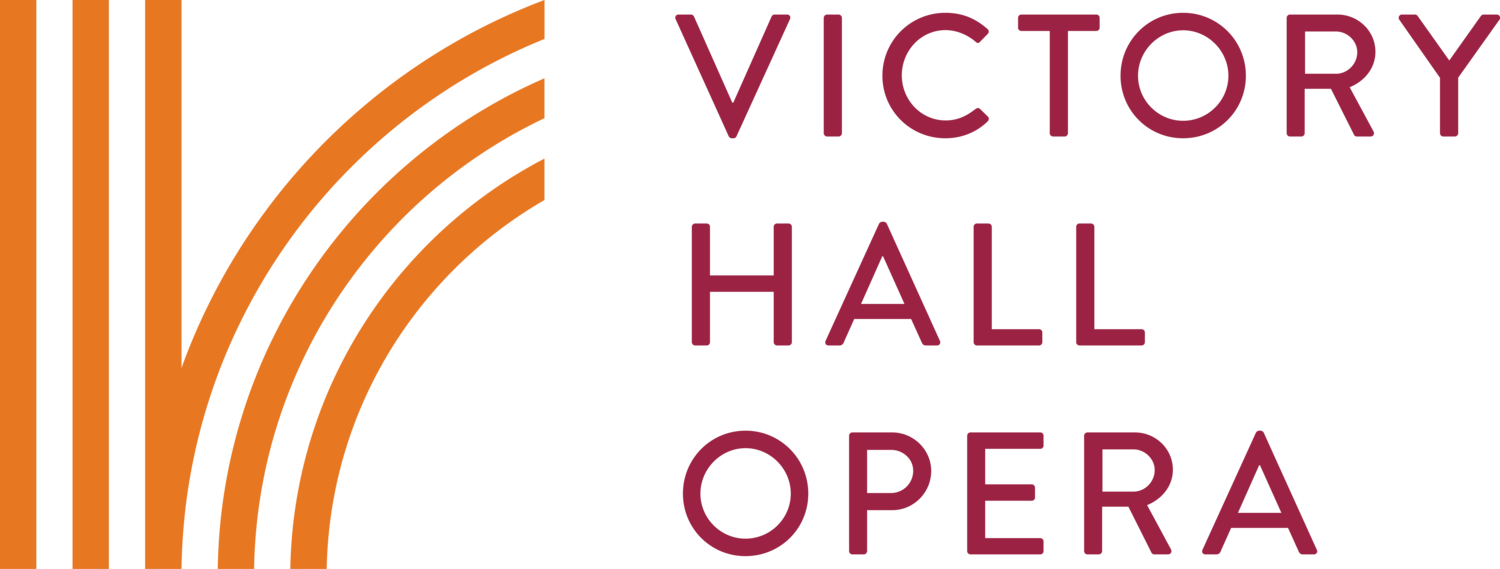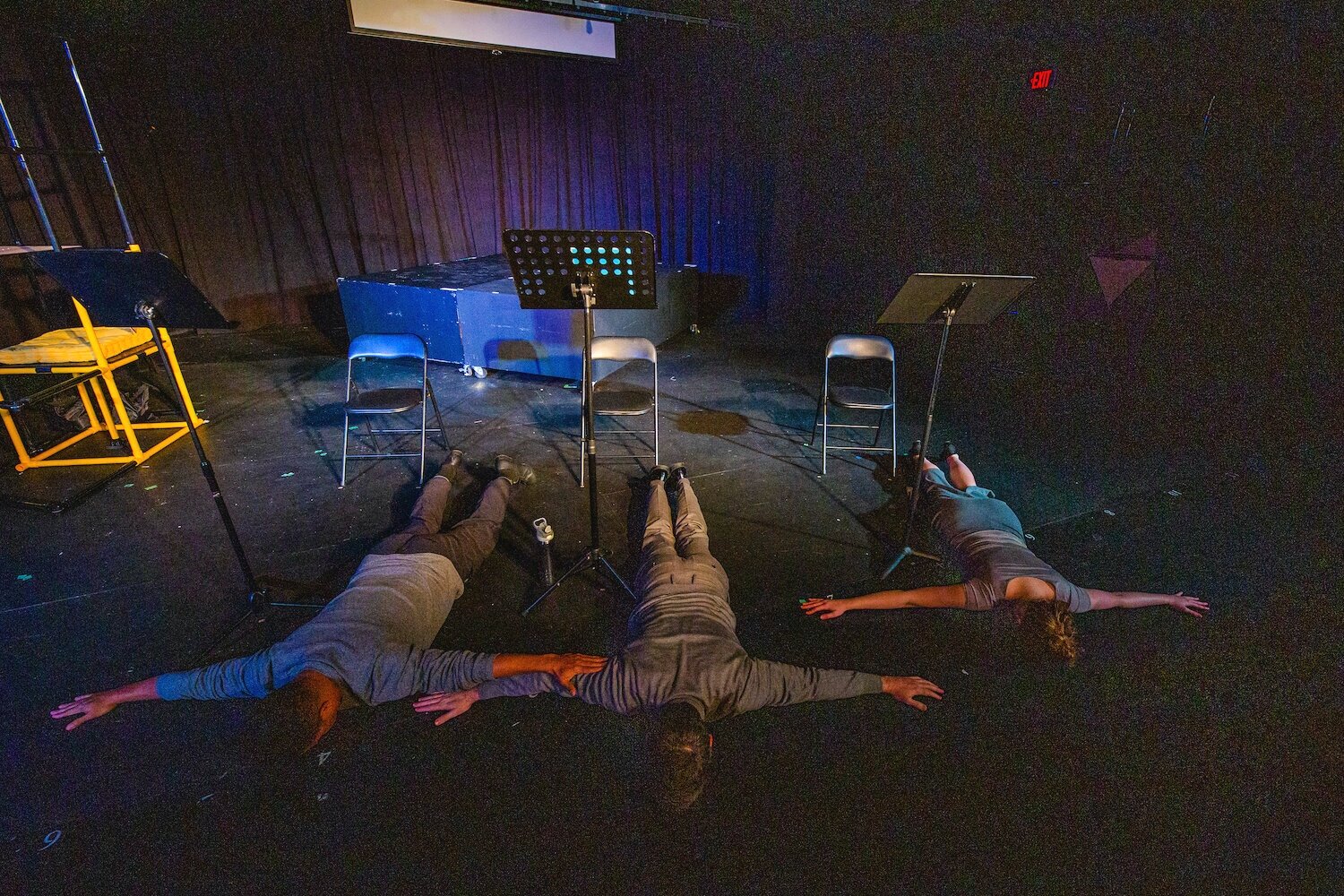What is “Motif”?
a new opera staging methodology created
by Victory Hall Opera
Motif is a generative methodology that uses performers’ own improvisational character to form staging material that becomes the basis of stage movement and choreographic sequences.
Motif was developed over 8 years of collaborative work at VHO. Its roots derive from physical theater practices, including a methodology developed by Charlottesville-based theater troupe PEP, and Moment Work, developed by the Tectonic Theater Company in NYC. Working with a combination of ideas from these two groups, we extended Motif to include singer-specific skills and sensibilities and moved in the direction of our own common uses of this physical work: sequences, gesture and dance.
Interested in Motif training for your school or organization?
Please contact mgordon@victoryhallopera.org for more details on our training package.
What are the steps of the process?
Motif begins with heightening our actors’ awareness of detail in movement, and of their own control over their bodies. We repeat a simple set of movements, first stripping away any imposed narrative so that we can view the movements purely. The specific details of the sequence are observed & objectively described (what foot goes where? How many steps to we take? Etc) , and then “treatments” are applied, such as big, small, slow and fast. We experiment with the changes in character of the sequence, and begin to notice the changes in implied narrative.
Singers begin creating brief, physical, theatrical moments. Simple, 5-10 second points of interest, brief sequences where something changes: someone feels something and expresses it, someone notices something for the first time, an idea is formed. We call these “Motifs”.
We bring a simple set of 5-10 props into the room, and experiment with what they could become when treated as mysterious objects.
Following this, the process of creating subject-specific Motifs begins. Something happens within a certain context, for example: a sequence based on travel, or weather, or backstage life. The sequences, or Motifs, should be repeatable, precise, and teachable to the other performers by the creator. They should not try to tell a whole story, or be mini-scenes. They should be extracts, and be created “choreographically” with an emphasis on the movements themselves. We ask the performers to notice the smallest details of their Motif, and be able to extract any more interesting elements. They can extract the hand movement, or the head turn. This can be later utilized in sequence, and can become a way in which the character moves or interacts with others during staging.
Extracts from Motifs, individual segments or whole sequences begin to be connected to one another. As we move to blocking an opera, narrative begins to play a role, but the moves themselves are simply building blocks. When we string them together in unexpected ways, we create situations and ways of moving that are disarming. We use the “Motif library” in a few different ways:
As choreographic movement for interludes, and sections of the opera that don’t involve singing, but in which we would like the performers to be creating theater. These sections are not dances, but they are stylized, and are intended to feel choreographic. Think of a storm scene in Barber of Seville, or the intermezzo for Cavalleria Rusticana. Both are long music interludes in which something is often seen to happen, but they are not dances per se.
As gesture. Each performer selects their own gestural language from the Motif library, and these gestures form a specific physical language for their characters. In one of our productions, a movement that was extracted from a can-opener machine Motif became the way in which a character would mock his colleagues at the office. In another example, a lobster shedding its shell became a woman’s gestural response to being ghosted by her boyfriend, as well as feeling great about her outfit.
As “half-and-half”. During the course of an otherwise naturalistic scene, we will include some Motif elements wherever we see fit. Characters will move freely between narrative and abstract/ expressive gesture. This can keep the audience engaged as they are seeing a way of being that does not fit easily into a style, and therefore encourages their own interpretative participation as formerly mentioned. When we leave gaps in the narrative, the audience becomes eager to fill them, and in so doing, the experience of the opera becomes unique to each member.
As dance. Sometimes we feel the need to create an actual dance sequence in an opera, and Motif lends itself brilliantly to this. Musical treatments can give the material more of a dance-based feel, as can repetition, reversing of patterns etc. We try to avoid setting the dance to the music at first. There is a certain magic in creating the dance, and then noticing how certain moves align with musical moments in an unexpected way. If we like them, then we begin to set specific moments to the intended music, but the results are never as good when we try to align staging moments to musical moments from the start.
- notes by director Miriam Gordon-Stewart


